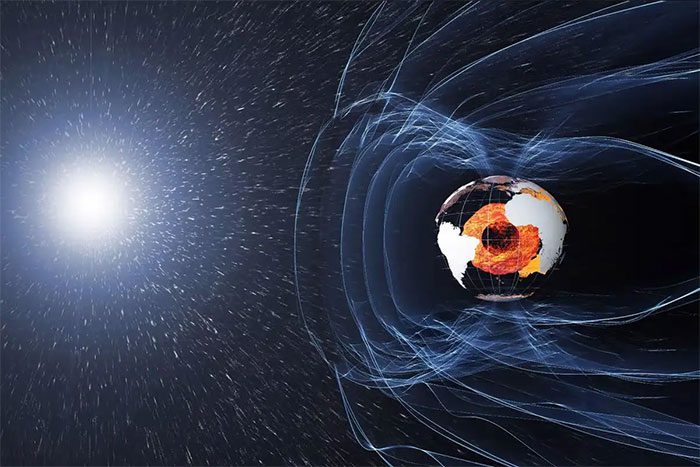Approximately 591 – 565 million years ago, the Earth’s magnetic field was nearly “collapsed”.
A type of event that could cause “apocalypse” in the present once propelled the most significant biological explosion on Earth during the Precambrian period, a study recently published in Communications Earth & Environment reveals.
About 600 – 540 million years ago, life on Earth included Ediacaran biota, some of the earliest complex multicellular organisms known.

Deep activities within the Earth’s core create an invisible shield for the planet – the magnetic field – (Graphic: ESA).
Fossil records indicate that these organisms significantly diversified in complexity and variety around 575-565 million years ago, setting the stage for the Cambrian explosion (541-485 million years ago).
Previous studies have shown that this diversification is linked to a significant increase in oxygen levels in the atmosphere and oceans occurring during the same period.
However, it remains unclear why this increase in oxygen occurred.
According to SciTech Daily, a multinational research team led by Dr. John Tarduno from the University of Rochester (USA) found answers by analyzing the magnetic properties of 21 plagioclase crystals, a common mineral found in the Earth’s crust.
These crystals were extracted from a 591-million-year-old rock in Brazil.
The results reveal a chilling fact: 591 million years ago, the strength of the Earth’s magnetic field was up to 30 times weaker than today’s magnetic field.
This may represent the most severe weakening phase of the planet’s magnetic field, as a previous study indicated that when it first formed, the Earth’s magnetic field, although weak, was still half as strong as it is today.
For life as we know it today, this could be extremely bad news, as the magnetic field serves as a protective layer for organisms on Earth and the atmosphere against harmful cosmic radiation.
A nearly collapsed magnetic field – indicated by weak magnetic intensity – would leave the surface “exposed”.
This threat of “falling from the sky” increases the chances of harmful cosmic rays, meteors, and other dangers striking the Earth, thinning the atmosphere that all living beings rely on…
However, during the time 591 million years ago, this incident inadvertently brought benefits.
The catastrophic assaults of cosmic rays did indeed impact the primordial atmosphere, causing hydrogen to escape into space.
But this occurred only for a short period, insufficient to make Earth as inhospitable as Mars; instead, it allowed the ratios of other gases in the air to rebalance, leading to increased oxygen levels.
The favorable oxygen concentration facilitated the unprecedented flourishing and evolution of early organisms, which in turn may have supported the diversification of species and complexity of life forms.
Thus, it can be said that this seemingly deadly incident contributed significantly to our existence today, as well as to other organisms that rely on abundant oxygen to survive.





















































